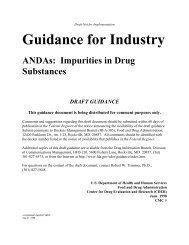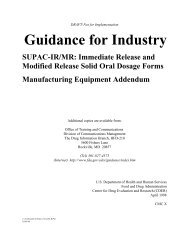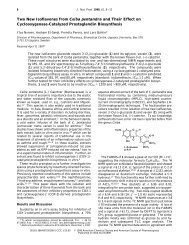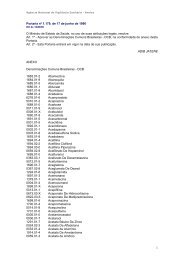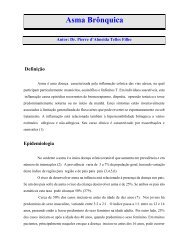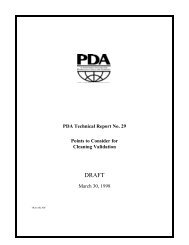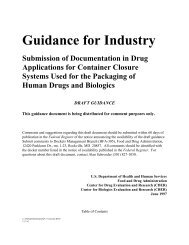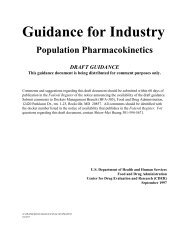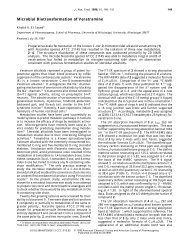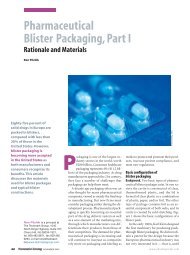Bioanalytical Methods Validation for Human Studies - Pharmanet
Bioanalytical Methods Validation for Human Studies - Pharmanet
Bioanalytical Methods Validation for Human Studies - Pharmanet
You also want an ePaper? Increase the reach of your titles
YUMPU automatically turns print PDFs into web optimized ePapers that Google loves.
Draft — Not <strong>for</strong> Implementation<br />
C<br />
C<br />
No interference present in blanks at the retention time of the analyte at this<br />
concentration, or typical response at this concentration at least five times<br />
greater than any interference in blanks at the retention time of the analyte<br />
Analyte peak (response) identifiable, discrete, and reproducible with a<br />
precision of 20% and accuracy of 80-120% (Shah 1992).<br />
2. Linearity<br />
The simplest workable regression equation should be used with minimal or no<br />
weighting. Selection of weighting and use of a complex regression equation<br />
should be justified. Four factors should be met in developing a calibration curve:<br />
C #20% deviation of the LOQ from nominal concentration (Shah 1992)<br />
C<br />
C<br />
C<br />
#15% deviation of standards other than LOQ from nominal concentration<br />
(Shah 1992)<br />
At least four out of six non-zero standards meeting the above criteria,<br />
including the LOQ and the calibration standard at the highest concentration<br />
0.95 or greater correlation coefficient (r)<br />
C. Precision, Accuracy, and Recovery<br />
The precision of an analytical method describes the closeness of individual measures of an<br />
analyte when the procedure is applied repeatedly to multiple aliquots of a single<br />
homogeneous volume of biological matrix. Precision should be measured using a<br />
minimum of five determinations per concentration. A minimum of three concentrations in<br />
the range of expected concentrations is recommended. The precision determined at each<br />
concentration level should not exceed 15% coefficient of variation (CV) except <strong>for</strong> the<br />
LOQ where it should not exceed 20% CV. Precision is further subdivided into within-day,<br />
intra-batch precision or reproducibility, which assesses precision during a single analytical<br />
run, and between-day, inter-batch precision or reproducibility, which measures precision<br />
with time and may involve different analysts, equipment, reagents, and laboratories (Shah<br />
1992, USP XXII 1990, Brooks 1985).<br />
The accuracy of an analytical method describes the closeness of test results obtained by<br />
the method to the true value of the analyte. Accuracy is determined by replicate analysis<br />
of samples containing known amounts of the analyte. A minimum of five determinations<br />
j:\!guidance\2578dft.wpd<br />
12/14/98 5



